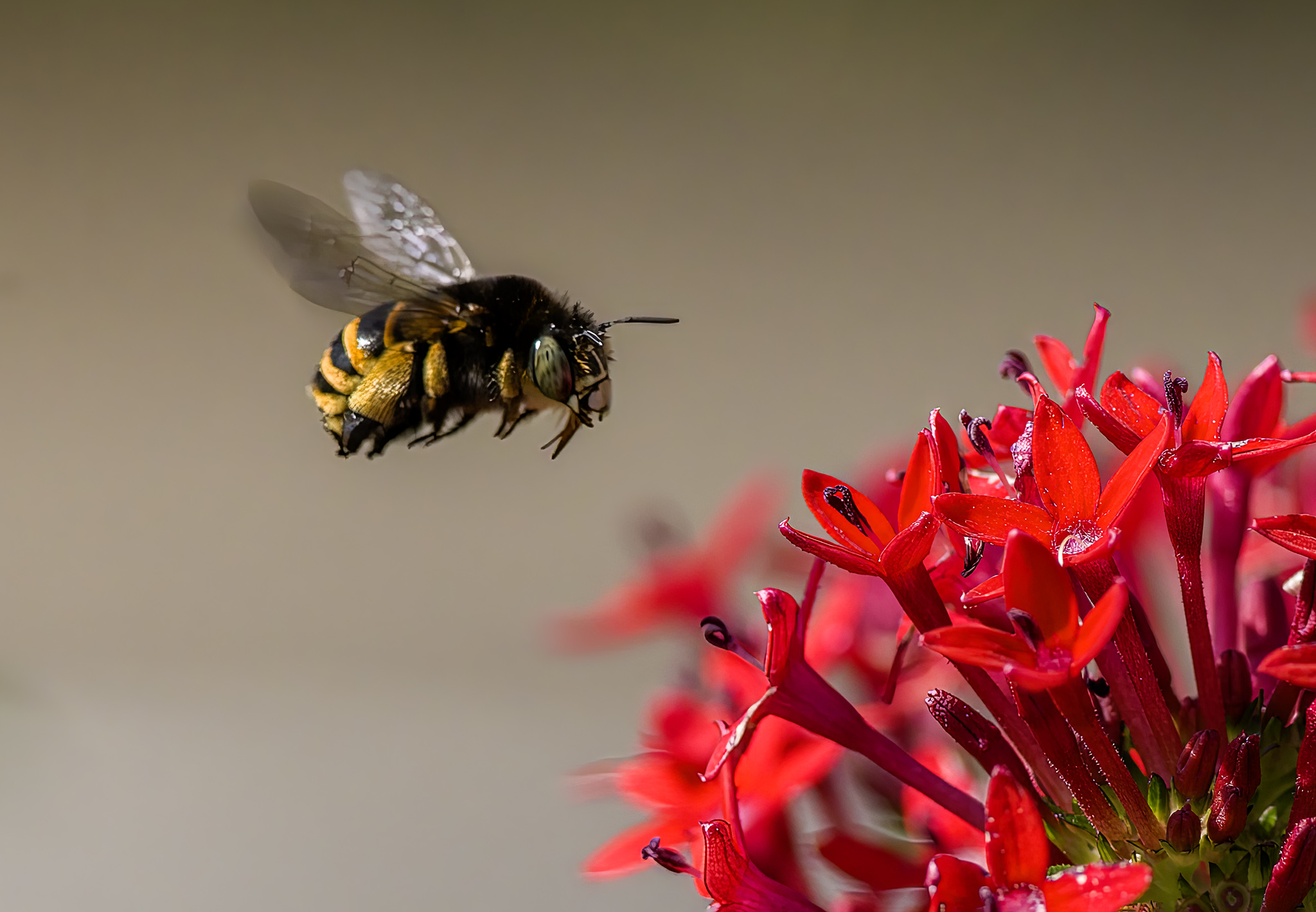The Hairy-footed Flower Bee (Anthophora plumipes) is a species of solitary bee known for its fast flight and distinctive appearance. It is a common springtime visitor to gardens and woodland edges, where it can often be seen darting between flowers.
Appearance
- Size: Medium-sized bee, about 12-15 millimeters in length.
- Coloration:
- Males: Notable for their long, pale-colored “hairy feet” (tarsi) on the middle legs, which they use during courtship displays. They have pale brown or yellowish facial hair and an orange-brown thorax with a black abdomen.
- Females: Are generally black with a dense covering of dark hairs, especially on their hind legs, which they use to collect pollen.
- Distinctive Features: Both sexes have a furry appearance, with dense hair that helps them collect and transport pollen. Their long tongue allows them to feed on deep, tubular flowers.
Habitat
- Distribution: Widespread across much of Europe, particularly in temperate regions. They are found in a variety of habitats, including gardens, woodland edges, hedgerows, and meadows.
- Nesting Sites: The Hairy-footed Flower Bee nests in soft mortar, soil, or even in old walls, typically making use of vertical surfaces with soft substrate for digging tunnels.
Behavior
- Flight Period: They are one of the first solitary bees to emerge in early spring, often from February to May.
- Feeding: Adults feed on nectar and pollen from a range of flowers, with a preference for early-flowering plants like lungwort (Pulmonaria), dead-nettles (Lamium), and primroses (Primula). Their rapid flight and ability to hover in front of flowers help them feed efficiently.
- Courtship: Males patrol flowers and nesting sites to find mates. The hairy feet of the male are used in a unique display behavior, often stroking the female’s face during courtship.
Ecological Importance
- Pollination: As efficient early spring pollinators, they play an important role in the pollination of many early-flowering plants, contributing to the health of ecosystems and gardens.
- Biodiversity Indicator: Their presence in gardens and wild areas can indicate a healthy, diverse environment with good floral resources.
Conservation Status
- Stable Population: The Hairy-footed Flower Bee is currently not considered at risk and is relatively common across its range. However, like many pollinators, it can be affected by habitat loss, pesticide use, and climate change.
The Hairy-footed Flower Bee is a charming and valuable pollinator, known for its distinct appearance and energetic behavior. It is especially favored by gardeners for its role in promoting biodiversity and its early spring activity.
Visited 843 times, 2 visit(s) today
Views: 1187
Subscribe to the newsletter:
